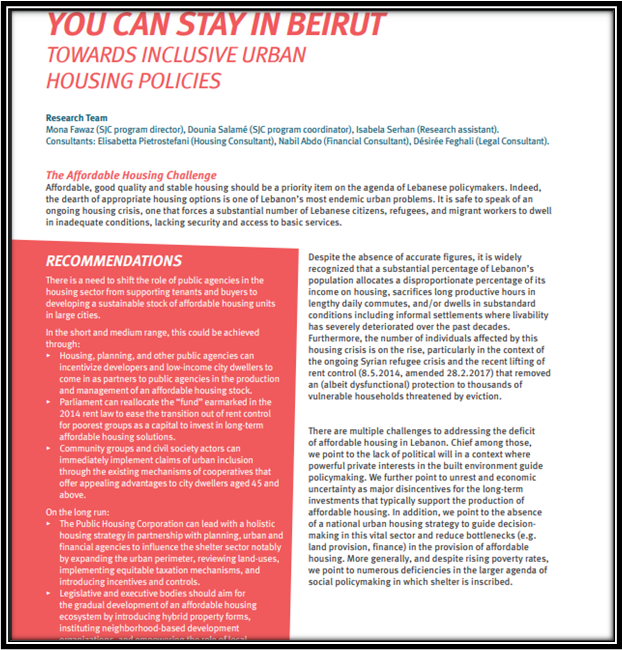11.4.4.Provide affordable housing for students
Affordable, good quality and stable housing should be a priority item on the agenda of Lebanese policymakers. Indeed, the dearth of appropriate housing options is one of Lebanon’s most endemic urban problems. It is safe to speak of an ongoing housing crisis, one that forces a substantial number of Lebanese citizens, refugees, and migrant workers to dwellin inadequate conditions, lacking security and access to basic services.
Inclusionary housing sets cities and/or neighborhoods on the long-term path of steadily increasing their stocks of affordable housing. Depending on the situation, inclusionary housing can be imposed as a pre-requisite to obtaining a building permit or facilitated through incentives extended to builders. By adopting inclusionary housing measures, many cities have secured a long-term sustainable production of affordable housing and consequently a minimum level of social diversity .
The definition of “affordability” in inclusionary housing is context-specific. There are nonetheless typical characteristics that distinguish “affordable housing units” from market units such as smaller units, lower selling prices, and deed restrictions that maintain the property outside speculative market mechanisms. Such figures still need to be developed in Lebanon through further studies. The proportion of affordable housing imposed upon construction of a new building usually ranges between 10 and 30 percent.
The choice of resorting to incentives or imposing regulations depends on political will, economic feasibility, and the level of planning constraints. When needed and/or feasible, public authorities may choose to introduce incentives such as tax breaks or density bonuses that can compensate losses incurred by developers and reduce their resistance to implement the policy.
Inclusionary housing can be implemented at the scale of entire cities and/or regions but it is also possible to restrict its application to the neighborhood level. In such contexts, municipalities may target specific areas with development restrictions that tie new developments to the provision of a percentage of affordable units. This is achieved through a change of zoning regulations. Inclusionary zoning can be motivated or justified by the will to preserve mixed-income neighborhoods.

